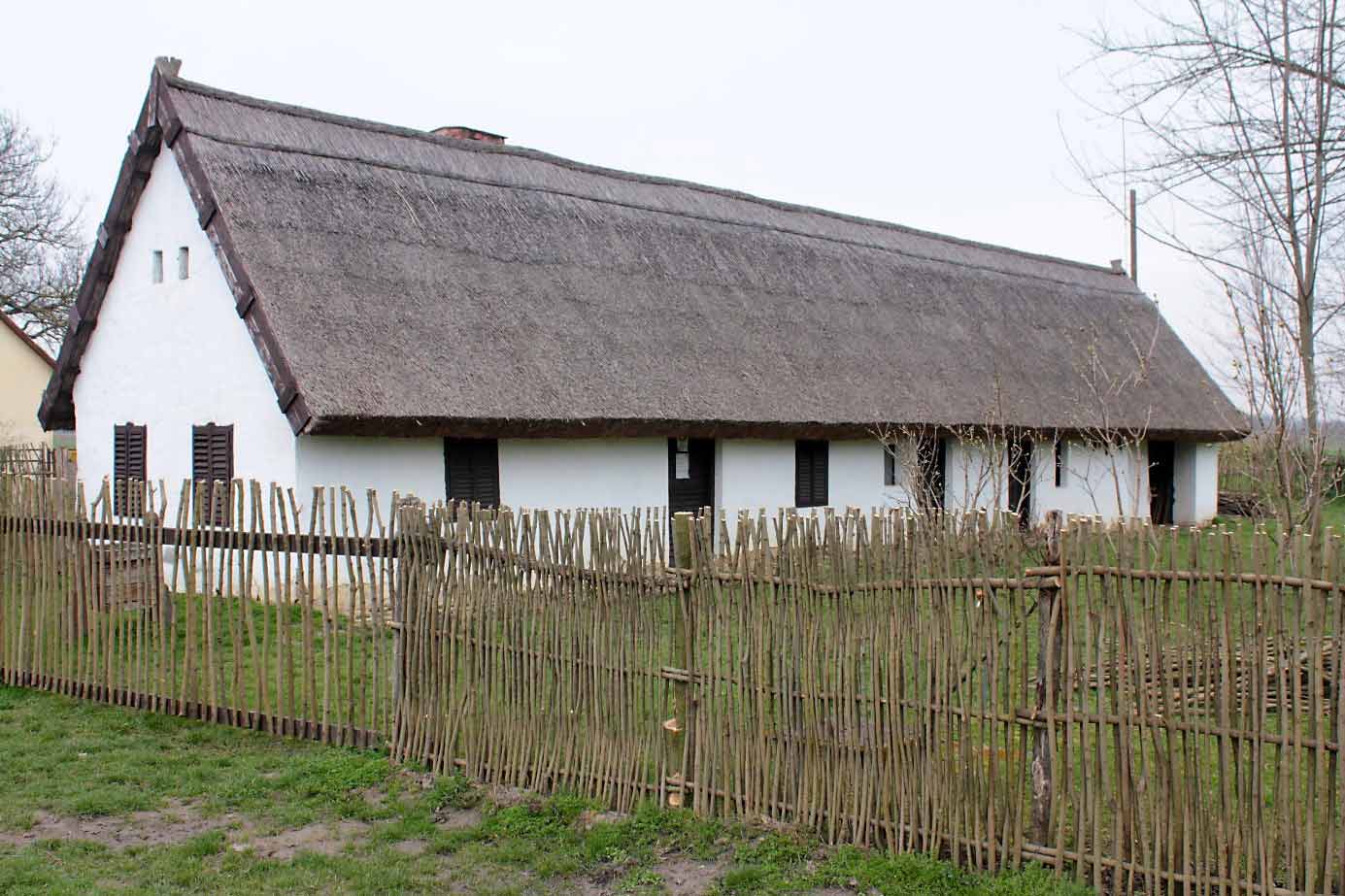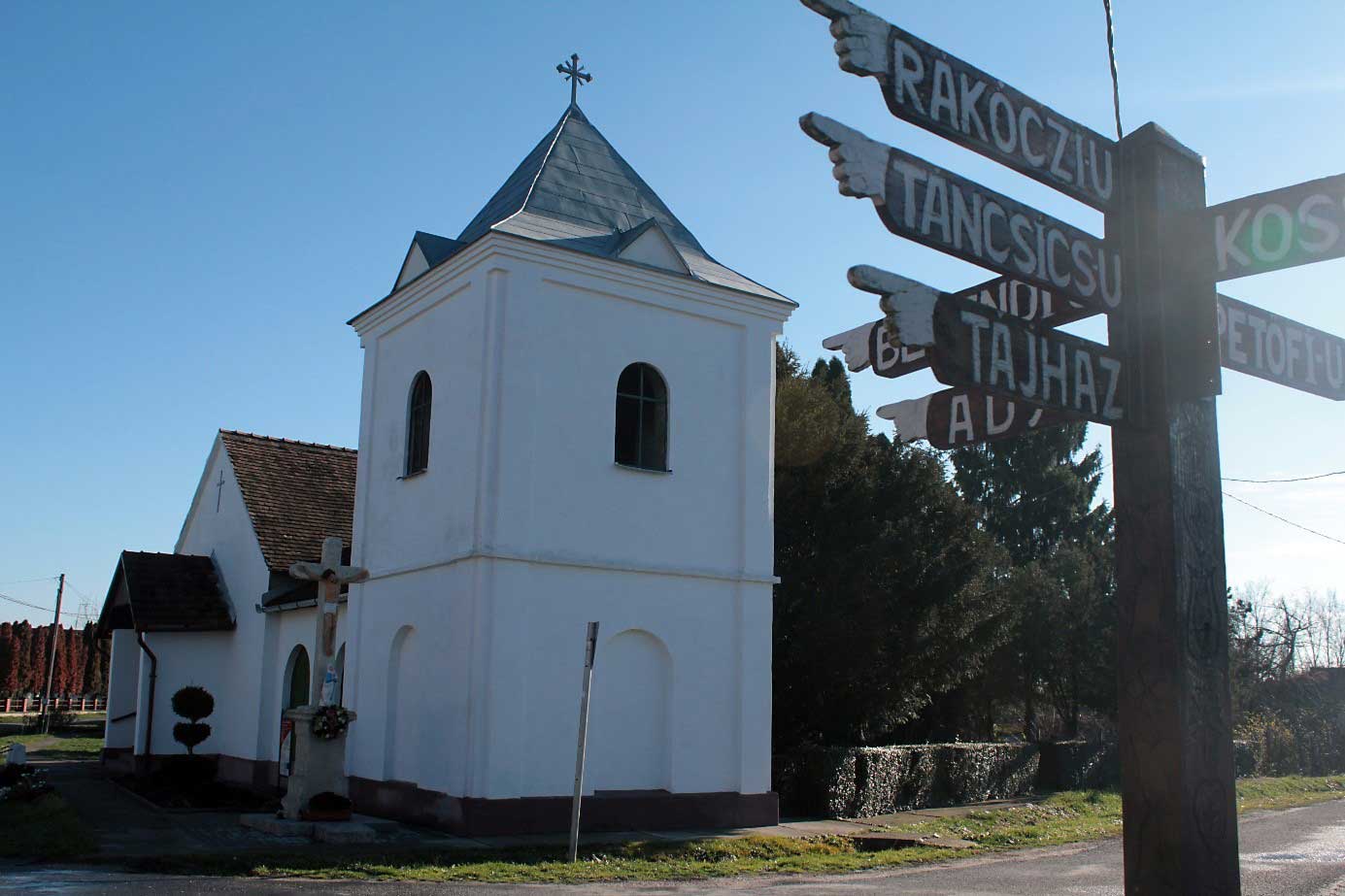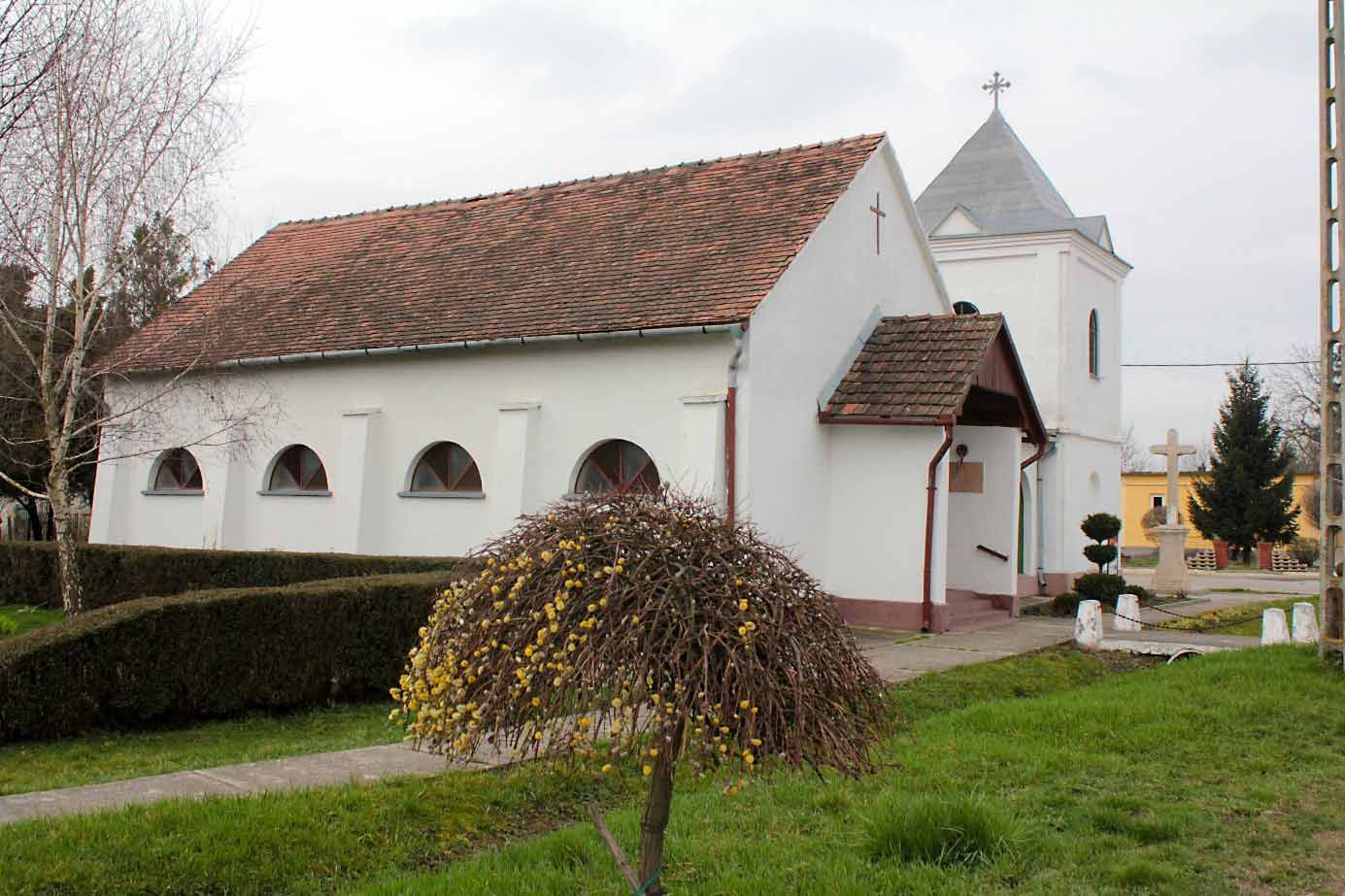It is located south of the Villany Mountains, 3 km west of Beremend and 2 km away from the Hungarian-Croatian border. It used to be a swampy area where several streams and fish ponds could be found. The village itself was surrounded by water and it is still clearly visible at the settlement’s structure to this day.
We can follow the name of the village with some interruptions from 1294 onwards. It could be read first in the form of Kassad in a deed dated 1294. The name comes from the “Kosa” suffix to a personal name or from the Slavic origin “porridge” loan-words. Porridges had an important role in the diet in the old country among the Slavs. This dish was also significant in later centuries. The settlement had a noble inhabitant with the name of Porridges. The village was named Kassad or Kasád in other charters but we can meet the Kyskasad name from 1427.
The earliest data about the village are known rom the time of Turkish occupation. There are data indicating that during the Turkish occupation, the village was completely deserted. Other recollections believe that a team of Nicholas Zrinski ravaged the place when the bridge was burned down in Osijek. According to some local patriots, the Turks from Siklós completely devastated it in a raid.
Croatian population inhabited Kásád at the end of the 17th century. The settlers were Roman Catholics and they were considered Illyrian Sokac according to their tongue-speaking. Their settling was done in an organized manner. They brought their customs, folk art and culture with them and they probably preserved those customs the longest within the Croatian nationality in Hungary. This was due to isolation, resulting from favourable geographic conditions of the settlement. Germans settled down here in the mid-1800s and people with Hungarian mother tongue did the same at the last third of the 19th century. The Drava river regulation and the fill built in 1860 led to the wetlands drying up. Due to this and animal husbandry livestock farming were promoted. It is no coincidence that sheep in this period was very important because wool was an important raw material for the clothing of Croats. Gardening also received a significant role. Kásád later belonged to the Dárda estates; George Schaumburg Lippe ruling prince inherited this area. According to the census the manor had Serbian settlers among Hungarian, Croatian and German serfs.
In 1930, for example, 122 Hungarian, 41 German and 406 Sokac lived in the village, while 10 Hungarian and 10 Croatian 7 German formed in the so-called periphery shelters (this term is very common here) 128 Hungarian, 58 German and 377 Croatian inhabited the place in 1970. One of the biggest outskirt places was Zálogos-puszta which was demolished in 1976. Hungarians, Germans, Sokac, even the Serbs loved in peace in one place for centuries. In 1930, for instance, there were 77 Hungarian, 9 German and 4 Sokac inhabitants in the mentioned place. Only 81 people lived in the farmstead in 1970.
In 2001 23.9% of the population identified themselves as Croats. The ethnic ties of the residents of the village were the following in 2001: Hungarian 62.3%, Roma 1.1%, Croatia 33.7%, 3.4% unknown or did not answer.
Sources
[1] GYÖRFFY György, Az Árpad-kori Magyarország történeti földrajza,Bp., 1998.
[2] http://www.dbhte.hu/index.php/helyi-ertekek/45-helytorteneti-gyujtemenyek-tajhazak/273-kasad-tajhaz
[3] MERÉNYI László: Kásád község története 2009.
Attraction of the settlement
Sokac Country house
In 1984, the village purchased the house which was built at the beginning of the 19th century and it was developed to a country house. The inner height is very low – about two meters high -; it has six rooms, divided into housing and economic sections. The walls are partly rammed earth walls and partly adobe walls. It has a taches roof with the front facade facing west.
The entrance is to the south side overlooking the courtyard where there is a kitchen with an open chimney stove. Entering the kitchen the living room is on the street side and the pantry is on the right. The living room furnishing includes only the most necessary furniture: painted corner bench with a table and some chairs, a painted bed covered with draped bedspreads, a painted chest in the corner behind the door, a wrought-iron hanger above it, a spinning wheel and an adobe stacked stove in the other corner.
Two small windows open to the street. Lesser-used household items are stored in the pantry: more pottery, a cabbage cutter, a wooden grease-pot, a wallet and bags, a straw dough-basket and other devices. The smoky-kitchen was the place for everyday kitchen tools, the tiles and cast iron cookware store apart from the place for cooking. The sleeping chamber is behind the pantry but with a separate entrance to the courtyard. This unheated room was the sleeping room for the young married couple and their small child.
Further along to the back of the house there comes the economic part: the stables, and then open sided yard depot. The house, due to its small size, was not suitable for storing grains and other grain forage, so they made a separate storage of grain, the so called granary in the yard. The wooden granary exterior is interspersed with different colours. The pigpen was also made of wood and it was usually raised above the ground about two feet higher. So it did not have direct contact with the wet ground and could remain more intact. It was also easier to keep clean because the spilled feed and animal faeces was falling between the floorboards. In front of the granary, there is a draw well little toward the street. The water table was high so it was not necessary to dig deep wells. The house is circled with a beautiful fence made with wreathed branches.
South point
The southernmost point which is accessible by road in Hungary is marked by a headboard near Kásád.
Roman Catholic Church
In 1974-76 a prayer house was built in place of a burned house next to the more than 100 years old bell tower.









